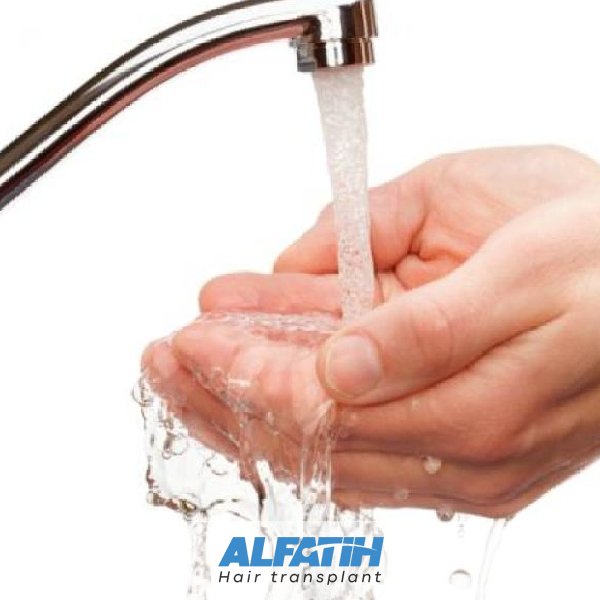Ablution after hair transplantation in the head After hair transplantation, there are some recovery instructions that must be followed and adhered to so that the hair follicles are not damaged and exposed to damage, or to avoid unintentionally being snatched from their place, and before knowing the method of ablution after hair transplantation, it is necessary to know that hair can be washed after 3 days of the operation, without exposing the scalp to any pressure, friction or rubbing it when washing and drying, and pouring water using a cup and not directing tap or shower water directly on the scalp so that the follicles are not damaged.
After undergoing a hair transplantation on the head, it’s important to follow specific guidelines for ablution (wudu) to ensure the healing process is not disturbed. Here are the steps and considerations for performing ablution post-hair transplantation:
General Guidelines:
- Avoid Direct Water Pressure: For the initial days following the transplant, avoid direct water pressure on the transplanted area. Use gentle, low-pressure water flow.
- Use Gentle Movements: Be very gentle when washing the transplanted area. Avoid rubbing or scrubbing.
- Follow Doctor’s Instructions: Always adhere to the specific instructions provided by your surgeon or medical professional.
Steps for Performing Ablution:
- Hands and Arms: Wash your hands and arms as usual. This step does not affect the transplanted area.
- Mouth and Nose: Rinse your mouth and nose carefully, making sure water doesn’t splash onto the transplanted area.
- Face: When washing your face, avoid the transplanted area. You can use a damp cloth or your hands to gently clean around the forehead and cheeks without touching the transplanted area.
- Hair (Masah): Instead of wetting the entire head, which might be the usual practice, you can:
- Lightly Wet Hands: Lightly wet your hands and gently wipe over the hair, avoiding direct contact with the transplanted area.
- Use a Damp Cloth: Alternatively, you can use a damp cloth to perform masah (wiping) on the head. Make sure the cloth is not too wet to avoid dripping water onto the transplanted area.
- Ears: Clean your ears as usual, taking care not to let water run towards the transplanted area.
- Feet: Wash your feet normally, as this does not impact the transplanted area.
Additional Tips:
- Healing Period: Follow the above guidelines until the transplanted area has sufficiently healed, usually about 7-10 days, or as directed by your surgeon.
- Avoid Contaminants: Keep the transplanted area clean and avoid any potential contaminants during ablution.
Consultation:
- Medical Advice: If you have any concerns or uncertainties about performing ablution post-transplant, consult your doctor or surgeon for personalized advice.
By carefully following these steps, you can perform ablution without compromising the healing process of your hair transplant.



